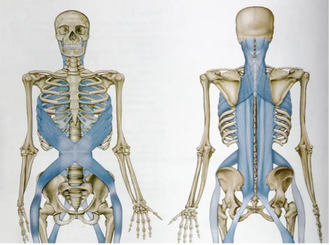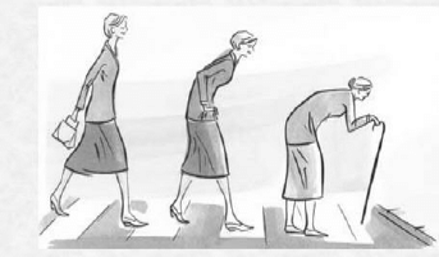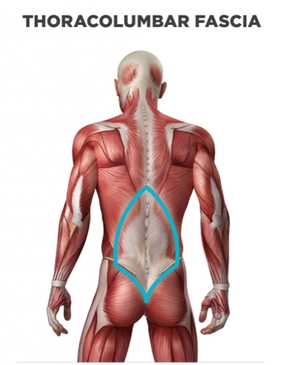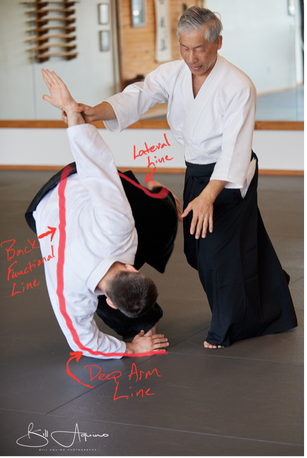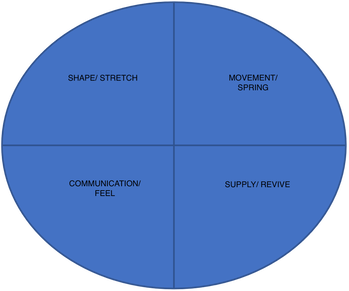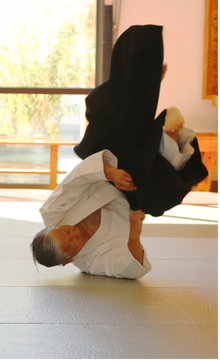|
|
|
By Dr. Paul Williams, PT, DPT For this series, I will focus on how fascia group together muscles, myofascia, into networks called tracks, lines, or chains that can provide a transfer of force across the entire body. For part one, we will look at how these chains support the body during forward and backward rolls. In the second part, I will explore how fascia can assist and potentially be strengthened as a biotensegrity structure when performing and receiving aikido techniques. In the last part, I would like to discuss internal practices and how they can help form healthy fascia. Beginning to Roll A common Issue with learning how to roll is fear. Most who have never rolled on a mat in their life have a fear of hurting themselves. As an aikido teacher, it’s tough to convey the common phrase “there is nothing to fear but fear itself” when new students are first faced with the ground below them. But when we educate them on the purpose of rolling, how their bodies are made to roll, and how it strengthens the body, then I believe we can sequester some of that fear. Hoa Newens Shihan likes to say, “The mat is our first and best uke because it is unchanging and always providing us with consistent feedback.” I would like to add that the mat is our best physical trainer. Rolling molds our body’s fascial system into the shape of a circle which is an essential shape in aikido techniques. To have our rolls smooth and without interference from our bodies, we need to round out the edges and therefore evenly dissipating the ground reaction forces from the mat. What is Fascia? “One could also describe them as fibrous collage-nous tissues that are part of a body-wide tensional force transmission system.” (Schleip et al., 2012). Luckily, we come equipped with a ubiquitous protective layer just under our skin and throughout our body called fascia. Anatomy Trains by Thomas W. Myers is a wonderful book that took me down a rabbit hole of research on the topic of fascia. Fascia is the connective tissue that covers, shapes, and protects every organ, muscle, joint, tendon, adipose tissue, blood vessel, lymph node, and nerve fiber in our body. Fasciae are mostly made up of collagen, elastin, and a viscous fluid called hyaluronan which are embedded in a matrix network. This matrix is both superficially under the skin and deep in the muscles. It connects and shapes muscle groups across the entire body from front to back and laterally from one side to another. These tracks or chains provide support, transfer force from muscle contraction, and protect us from external forces. In modern medicine, fascia has been one of the most understudied tissues of the body. It was quickly discarded as gristle in anatomy classes for decades due to a lack of tools that could measure fascia. Clinical Implications of Fascia Now that we have better imaging technology, there is no doubt that fascia is an important part of our lives and can be the cause of function or dysfunction. If we don’t move dynamically in life, maintain proper hydration, and practice proper physical or movement therapy, then fascia can become dysfunctional. In my practice as a home health physical therapist, I’m exposed to how fascia can pull my patients down into postures that permanently cause movement dysfunctions. “A man is born gentle and weak. At his death he is hard and stiff. Green plants are tender and filled with sap. At their death, they are withered and dry. Therefore, the stiff and unbending is the disciple of death. The gentle and yielding is the disciple of life.” - Lao Tsu (Tao Te Ching, Chapter 76) The most common example in my practice is that of an elderly person that sits for most of the day in a wheelchair, recliner, and/or ambulates stooped with a walker. All these positions maintain the torso and hips into flexion and restrict extension for proper upright posture. My patients with this condition complain that they feel like they are being pulled down. According to the Tao Te Ching and the fuzz speech, without daily counter action into extension via stretch of the anterior chain, or as Myers would say the “superficial front line”, we are at risk of this frontal fascia tightening and solidifying us into this forward position, as you see on the picture below. Over the last ten years, myofascial release therapy has become a fast-growing approach of physical therapy. This is due in part to the recent discovery that there are more nociceptive (pain), interoceptive (internal awareness), and proprioceptive (position awareness) receptors found in fascia than in muscle fibers. Leading researcher, Robert Schleip, calls fascia the body’s largest sensory organ with an estimated 250 million nerve endings. That’s six times more richly innervated than our muscles. It makes sense that more injuries occur in the connective tissue including deep and superficial fascia than muscle bodies themselves. This has been proven by studying the thoracolumbar fascia where there is a high concentration of myofascial tissue. It was discovered that this fascia is the most pain sensitive tissue in the lower back. These nerve endings run up the spinal cord from the tissue to the insula cortex of the brain. This area of the brain is responsible for one’s sense of self and emotional state, and this may be the reason why one’s emotional state seems to be correlated with episodic chronic low back pain. Modalities such as cupping, scrapping, and acupuncture in the form of dry needling have recently been adopted by the physical therapy profession from traditional eastern medicine. More and more therapists are using fascia-based therapies when looking at patients with movement dysfunctions or athletes wanting to optimize their performance. I think we all may remember Michael Phelps at the 2016 Olympics. He and many other swimmers testified that they could get more reach with their swim stroke after a cupping session. This can potentially give an edge in a sport where one hundredth of a second is the difference between winning and losing. Personally, I’ve had to use cupping for shoulder pain. Several years ago, after about 3 years of neigong (internal practice), I was able to relax my shoulder at will, but I could still feel tightness and pain superficially to the muscles. After one session of cupping from a physical therapist, those fascial adhesions created from a previous shoulder injury were stretched and able to become elastic again. This resulted in an instant relief of discomfort and rigidity which has lasted ever since. This presentation provides a visual demonstration on the importance of a healthy fascia system and how fascial injury can lead to dysfunctions in everyday mobility. As a result of this understanding, physical therapists can no longer look at musculoskeletal disorders in the same way. We cannot just hyperfocus on knee or shoulder pathologies and only provide examination and treatment in that one local area. With a connected fascial matrix approach, it is now more appropriate to examine and possibly treat the area above, below, or across from the orthopedic pathology. As an example, for the injured shoulder, we must assess the opposite hip. For an injured knee, we ought to look at the ankle or hip above to have a complete clinical framework for what is going on at the site of pain or dysfunction. Strengthening Fascia with Rolling So, if we have these healthy fasciae that support us in our movements, then how do we make them stronger and more functional? They aren’t like muscles in that they don’t immediately contract at the will of our nervous system, but they do stiffen more longitudinally and some transversally to local muscle contraction. Fasciae can also respond and strengthen to strain and stress through stretch and/or compression placed on them much like the bones in our body. Unlike bones and muscles, fasciae are not isolated to a specific area of stretch or muscle contraction. In fact, it has been observed when the latissimus muscle is dynamically stretched, it affects and stiffens the opposite lumbar and hip fascia. For muscle contraction, a seated anterior pelvic tilt causes small cranial displacements of fascia. Just like muscle or bone, the more use a myofascial chain gets, then the stronger it becomes. This is done by tissue remodeling when fibroblasts lay down collagen, making the connected myofascial chains across the body more resilient and stronger. “Although the limbs are bony and angular, practitioners of martial arts can often make it look as if the body is made of India rubber as they roll effortlessly along the legs, arms, and trunk.” (Myers, T. W., 2014) Interestingly, the author of Anatomy Trains has a background in aikido, and he uses the aikido roll in his book to show how a myofascial chain helps support this exercise. The forward roll lightly starts contact at the little finger. Then it moves along the ulna and triceps to cross the rotator cuff and finally to the latissimus. This is what’s known as the Deep Back Arm Line. From the latissimus, it connects diagonally to the Back Functional Line supporting most of the body’s weight crossing the back to the opposite hip. The final track of the roll moves down the Lateral Line of the leg all the way to the foot when it contacts the floor to stand back up. Below is an illustration of how this occurs. “Fascial tissues are seen as one interconnected tensional network that adapts its fiber arrangement and density, according to local tensional demands.” (Schleip et al., 2012). The definition above describes a quality of biotensegrity. More on this subject will be discussed in part two, but in general it describes our body’s ability to balance compressive and tensional forces from one end to another. As you can see, the roll is fully supported by three lines of fascia making one track or chain from the tip of the pinky finger all the way to the contralateral leg. The stretch and compression of this track during our front and backward rolls will strengthen our cross-body connection. Hypothetically, the more rolls we do the stronger our connections can become. Robert Schleip, a leading researcher on fascia, devised a four-dimensional model for how to properly train fascia. These dimensions correspond to the principles of function of fascia which include shape, movement, communication, and supply. Not surprisingly, the roll covers all four functional dimensions in his criteria. The first function is expressed by the “Stretch” of our chains when preparing for our roll by creating the shape of a circle. We crouch down rounding our shoulders and back by internally rotating the arms and reaching forward in the shape of a circle. If we don’t do this stretch first and maintain the tensile elasticity throughout the roll, the shape will collapse and can result in injury. The second function of fascia is movement via “Spring” action. That is utilized at the beginning of the roll to create momentum which carries our bodies through a roll all the way to a standing position. If we don’t push off with the back foot and spring forward, we can put too much pressure on the circular shape created by our arms and collapse our structure. This is usually demonstrated in the barrel or sideways roll. The next function is “Supply” where we revive and rejuvenate the fascia. Schleip uses the example of a foam roller where compressive forces on the fascia provide a self-massage. We do the same with the compressive ground reaction forces when we contact the mat. This is a benefit for fluid exchange where metabolic waste in the fascial matrix is replaced with fresh blood plasma which can assist in reducing inflammation.
The last function is to “Communicate”. Our bodies communicate with us by feeling where our center is in space in relation to the mat during the roll. Like Newens Shihan has said, “The mat is our best uke”, because we are feeling where our circular shape is smooth or not. This in turn improves our proprioceptive awareness since we are getting real time biofeedback from the ground through our bodies. Conclusion One could say that our bodies are literally made to roll. This begs the question of how long before we see the fruits of our labor? Fascia is unlike muscle which strengthens and increases in size after several weeks of diligent strength training. In fact, an increase in fascial thickness can be a sign of pathology found in patients with low back pain. What we need are tissues that have strong tensile properties which make this metaphorical wetsuit more pliable, elastic, and less prone to injury. Fascia will take around 3-9 months before tissue remodeling becomes a reality. It's important to apply this knowledge in a way that relaxes us and gives us confidence. Rolling is a practice meant to give us a strong interconnected body over time, which allows us to transmit forces along these built-in chains. So, no need to rush it. Take your time to do it right. Through an understanding of our myofascial chains, we can now see the importance of rolls in our training. According to the Anatomy Trains theory, these fascial tracks not only support us in rolling, but also allow us to transfer and exert force through our bodies safely when performing techniques. More on this will be discussed in the next blog. Unfortunately, rolls have become less practiced and are viewed with minor importance in many dojos. This comes at the cost of not developing strong cross-body connections that can in turn perform strong and structured techniques that incorporate proper shape, dynamic movement, body awareness, and restoring tissue health. To our students, I hope those 50 rolls at the beginning of class are starting to make a lot more sense. Happy training! Works Cited Myers, T. W. (2014). Anatomy Trains: Myofascial Meridians for Manual and movement Therapists. Elsevier Ltd. Schleip, R., Findley, T. W., Chaitow, L., & Huijing, P. (Eds.). (2021). Fascia: the tensional network of the human body-e-book: the science and clinical applications in manual and movement therapy. Elsevier Health Sciences. Ajimsha, M. S., Al-Mudahka, N. R., & Al-Madzhar, J. A. (2015). Effectiveness of myofascial release: systematic review of randomized controlled trials. Journal of bodywork and movement therapies, 19(1), 102-112. Schleip, R. (2015) Fascia in Sport and Movement. Edinburgh, UK: Handsping Publishing. Schleip, R., Bayer, J. (2021) Fascial Fitness: Practical Exercises to Stay Flexible, Active, and Pain Free in Just 20 Minutes a Week. Berkely: North Atlantic Books/ Lotus Publishing. Kjaer, M., Landberg, H., Heinemeier, K., Bayer, M.L., Hanse, M., Krogsgaard, M.R., & Magnusson, S.P. (2009) From mechanical loading to collagen synthesis, structural changes and function in human tendon. Scand J Med Sci Sports. 19: 500-510. Laozi., Feng, G., & English, J. (1997). Tao te ching. 25th anniversary ed. New York, Vintage Books. Wilke, J. (2021). Mechanical force transmission across myofascial chains. Fascia in Sport and Movement, 147.
1 Comment
|
Site powered by Weebly. Managed by Bluehost
